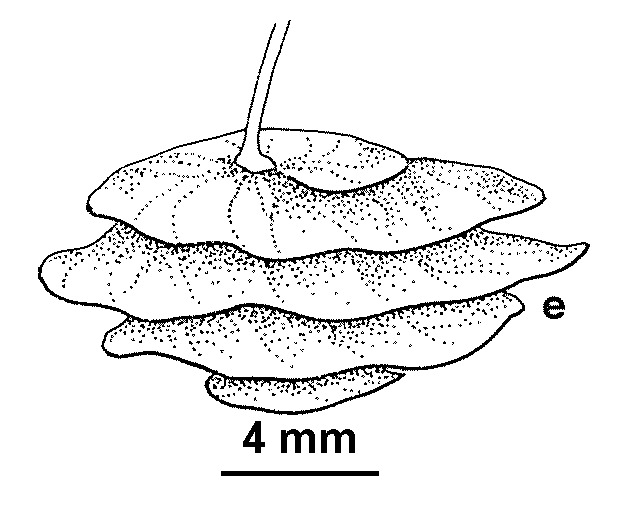Medicago orbicularis
(L.) Bartal. Button MedicProstrate or procumbent annual herb; stems 20–60 cm long, glabrous or sparsely hairy; hairs mixed simple and glandular. Leaflets obovate, 6–18 mm long, 5–15 mm wide, minutely dentate towards apex, upper surface glabrous, lower surface appressed-hairy, apex rounded or retuse with a terminal tooth; stipules to c. 10 mm long, laciniate, glabrous or hairy on lower surface. Inflorescence 1–5-flowered; peduncle 0.5–3 cm long, equal to or shorter than subtending petiole. Pedicels to c. 4 mm long; calyx 2–4 mm long, teeth equal to or longer than tube; corolla yellow; standard 4–6 mm long; wings shorter than keel. Pod with 3–7 coils, lenticular, 3.5–7 mm long, 12–18 mm diam., glabrous, spineless; coil edge paper-thin; face with prominent transverse veins, weakly anastomosing; lateral veins obscure; submarginal veins absent; seeds 10–26, to c. 5 mm long, yellow or brown. Flowers Jul.–Nov.
Also naturalised WA, SA, Qld, NSW. Native to the Mediterranean, the Middle East. Known from a few pre-1956 collections, from widely scattered localities in Victoria where it favours heavy soils.
Widely cultivated as a forage plant
Jeanes, J.A. (1996). Fabaceae. In: Walsh, N.G.; Entwisle, T.J., Flora of Victoria Vol. 3, Dicotyledons Winteraceae to Myrtaceae, pp. 663–829. Inkata Press, Melbourne.
 Spinning
Spinning


